Promoting the wider use of hydroponics paddy nursery can help Indian rice farmers save significant amounts of water, land, labor, time, and other resources.
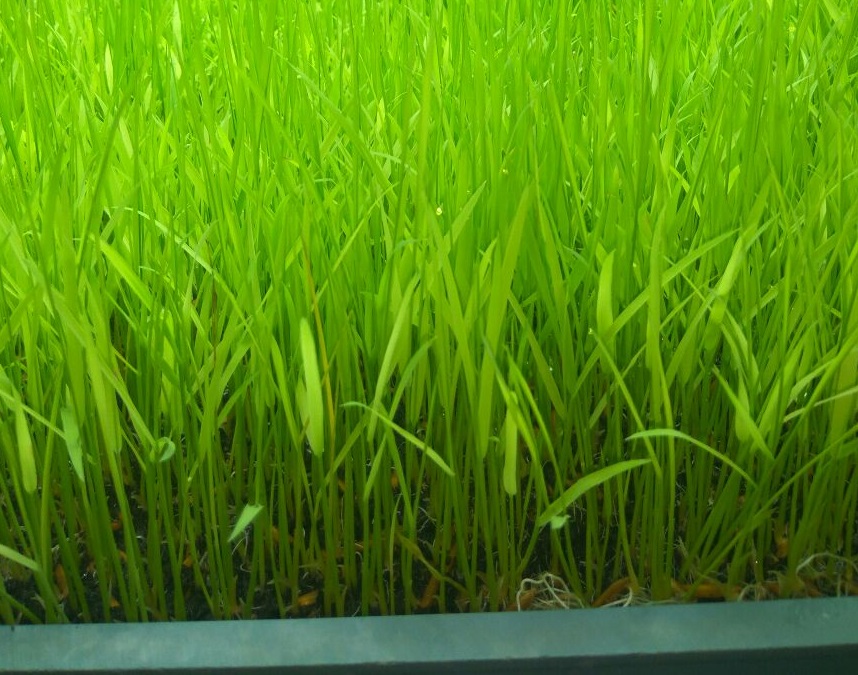
.
Rice (commonly known as dhan in South Asia) accounts for a significant contribution to the total food grain production in India. It is grown in about 25% of the total cultivable area in India and is the staple crop for more than 60% of India’s population.
In spite of being the second-largest rice producer after China, Indian rice farmers face a plethora of problems. Landholdings and land for rice cultivation is diminishing, irrigation water is becoming scarce, labor is becoming unavailable as young people prefer to look for jobs outside the agriculture sector, excessive use of fertilizers and pesticides, emission of large amounts of greenhouse gases such as methane, climate change and unpredictable weather patterns, decreasing soil fertility due to unfavorable and topographical conditions, productivity loss, poor yields, poor and water management.
Under such circumstances, in the near future, it will become very challenging to produce high-quality paddy. Taking this into consideration, farmers need to adopt new technologies to cope with these challenges. Farmers need technologies that can reduce their cost of cultivation, reduce drudgery, improve their returns and are sustainable
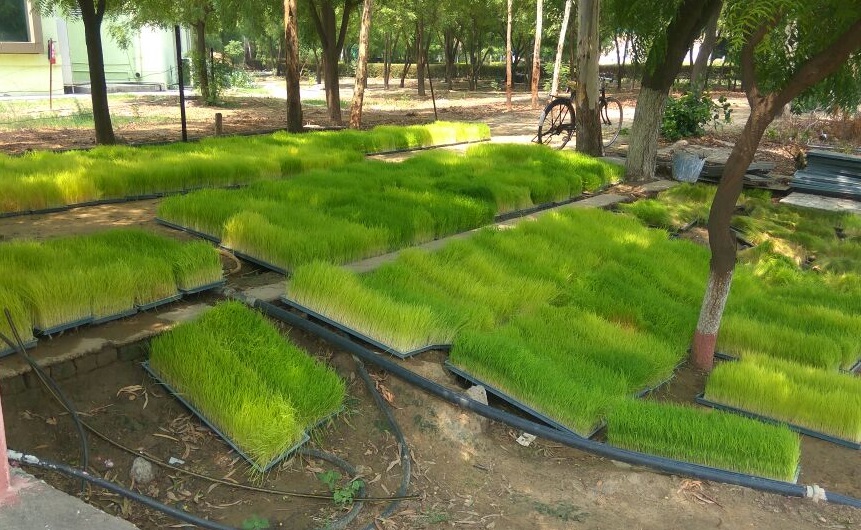
Success starts at the nursery
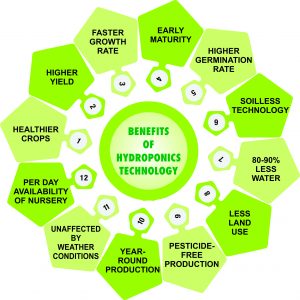 The importance of establishing a proper paddy nursery in traditional rice cultivation cannot be overstated. The performance and yield of a rice crop are strongly affected by its early stages. Using unhealthy seedlings can reduce yield by at least 10%. Transplanting the seedlings at an appropriate time is also very crucial in getting optimum yield.
The importance of establishing a proper paddy nursery in traditional rice cultivation cannot be overstated. The performance and yield of a rice crop are strongly affected by its early stages. Using unhealthy seedlings can reduce yield by at least 10%. Transplanting the seedlings at an appropriate time is also very crucial in getting optimum yield.
In South Asia, rice seeds are commonly grown in nurseries on flat seedbeds before being transplanted into the puddled field. Traditionally, Indian farmers use the wet-bed nursery mainly in areas where there water is sufficient. Pre-germinated seeds are broadcasted on a soil that is thoroughly puddled and leveled. The addition of organic manure and a small amount of inorganic fertilizer as basal dressing increases the easiness of uprooting of seedlings and seedling vigor.
Indian farmers encounter several problems in establishing proper paddy nursery, transplanting survival, diseases, etc. Additionally, the traditional mat-type nursery requires cumbersome, labor-heavy land preparation. It also needs higher agrochemical input and regular watering. They also observed more incidences of contamination, yellowing of leaves, and tip burning because of the open field nursery preparation. Hydroponics may be one solution to the many problems currently affecting paddy growers in India such as adverse climate and diminishing land and water.
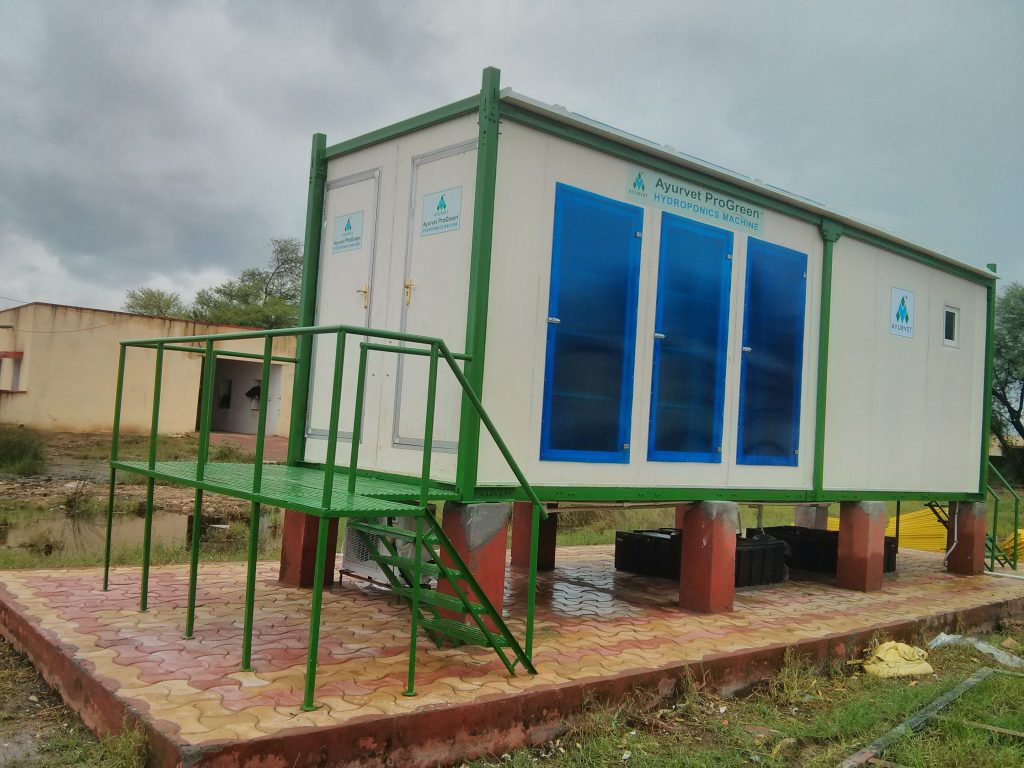
.
Hydroponics rice nursery technology: A possible solution
In the conventional system, for each 100 m2 area of nursery bed, 1 kg N, 0.4 kg P2O5 and 0.5 kg K2O is usually provided. The fertilizers are mixed with soil before sowing. Seedlings are ready for transplanting in 21-30 days after sowing.
The hydroponics system grows plants without soil. Instead, the plants are grown with their roots in a nutrient solution or in an inert medium such as perlite, vermiculite, and gravel. Because the nutrients are available at the root zone, the plants flourish rapidly and the seedlings are also ready for transplanting in seven days using approximately eight times less water compared to the conventional wet-bed nursery. In the conventional system, one kilogram of paddy seed requires 3000-5000 liters of water.
The hydroponics technique is also advantageous relative to conventional agriculture. Because the crops are grown under a controlled environment, the nursery is free from weeds and shielded from insects. As such, there is no need to use expensive and toxic pesticides or herbicides. The temperature, light, water, and nutrition can be fully adjusted to optimum conditions making the hydroponics paddy nursery highly productive even with limited water and land area.
Seedlings grown using hydroponics paddy nursery establishes well in the field and can be useful particularly during delayed monsoon rains.
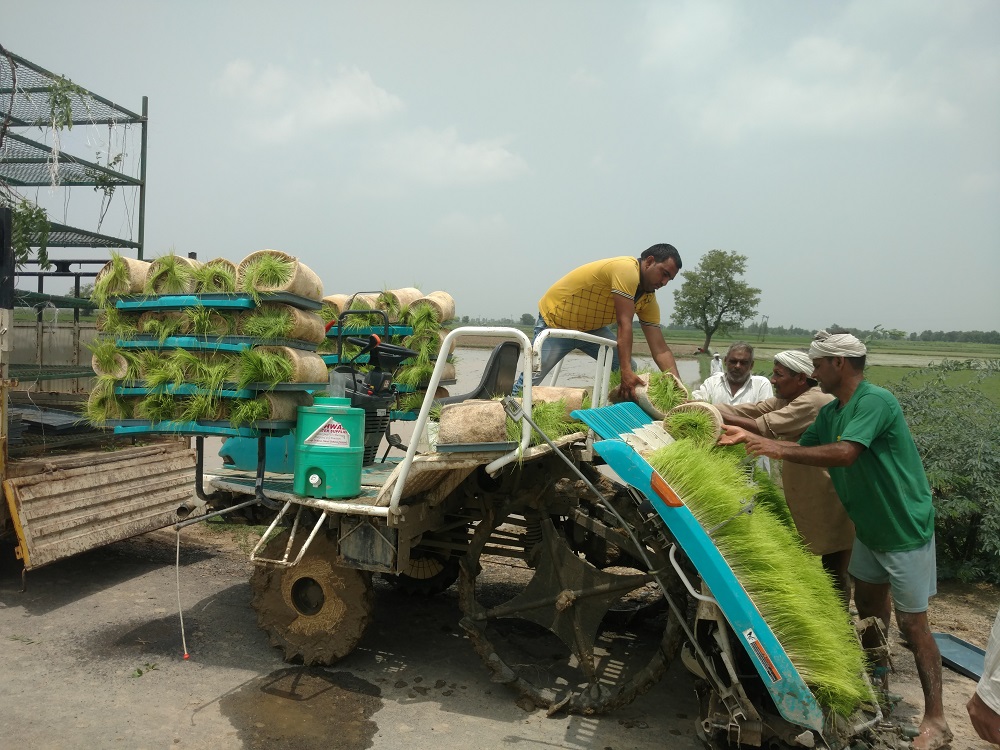
The hydroponics paddy nursery protocol
The Ayurvet Pro Green Hydroponics Paddy Nursery grows rice seedlings under a fully controlled environment and multilayer shelves. A special nutrient solution is provided at regular intervals to meet the requirements of the seedlings and encourage strong root development. It only takes seven days for the rice seedlings to reach 15 centimeters at 30-330C and 75-80% humidity. The humidity and temperature play a crucial role in the growth of the paddy nursery and these can be adjusted to suit the crop requirement.
The other advantages of hydroponics paddy nursery over conventional nursery cultivation include:
- Hydroponics-grown seedlings recover fast, produce tillers vigorously, mature uniformly, and have higher yield gain
- Crops mature earlier leading to early harvesting and better returns
- Uses 95% less water
- Suitable for late delayed monsoon conditions
- Land for nursery can be used for other purposes
- Mechanical transplanting ensures uniform spacing and plant density.
- Mechanized transplantation cover 1.2 to 1.6 hectares per day with less manpower
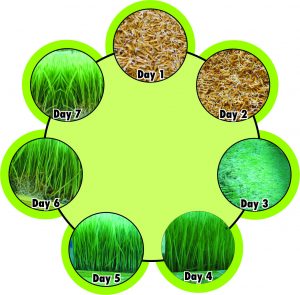
New technology makes an impact on farmers’ fields
Although many developed countries have already adopted this technology, hydroponics is comparatively new in India. The Ayurvet Research Foundation is one of the pioneers in developing hydroponics technology for rice in the country. The Indian Ministry of Agriculture had given the commercial test report of the Ayurvet Pro Green Hydroponics machine.
The organization has been working on the technology for the past 10 years and has received a patent for the machine structure and process. Since 2009, Ayurvet Research Foundation have conducted experiments and field trials in 50 villages Orrisa in Western Uttar Pradesh and Sonipat and Panipat in Haryana with around 2,500 paddy farmers. Regular training and demonstration sessions were organized for the farmers for making them aware of the technology. To date, a total of 81 hectares have been transplanted with rice seedlings grown using the hydroponics paddy nursery.
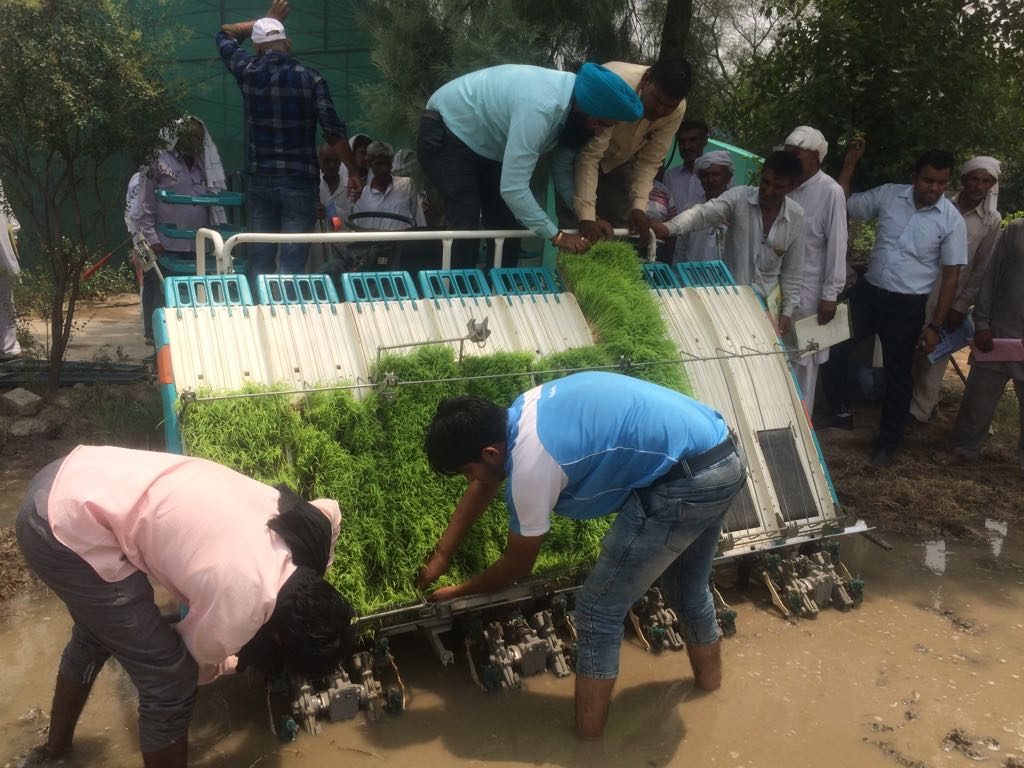
The National Bank for Agriculture and Rural Development (NABARD) Chandigarh Regional Office has approved the work done by the research foundation. In 2016, NABARD funded a three-year project on the development of hydroponically grown paddy nursery and mechanized transplantation in 85 hectares in Sonipat District in Haryana. Under the project, paddy seedlings were grown in trays using a hydroponics system in seven days. The seedlings were transplanted on farmers’ fields on the 8th day using mechanical transplanter.
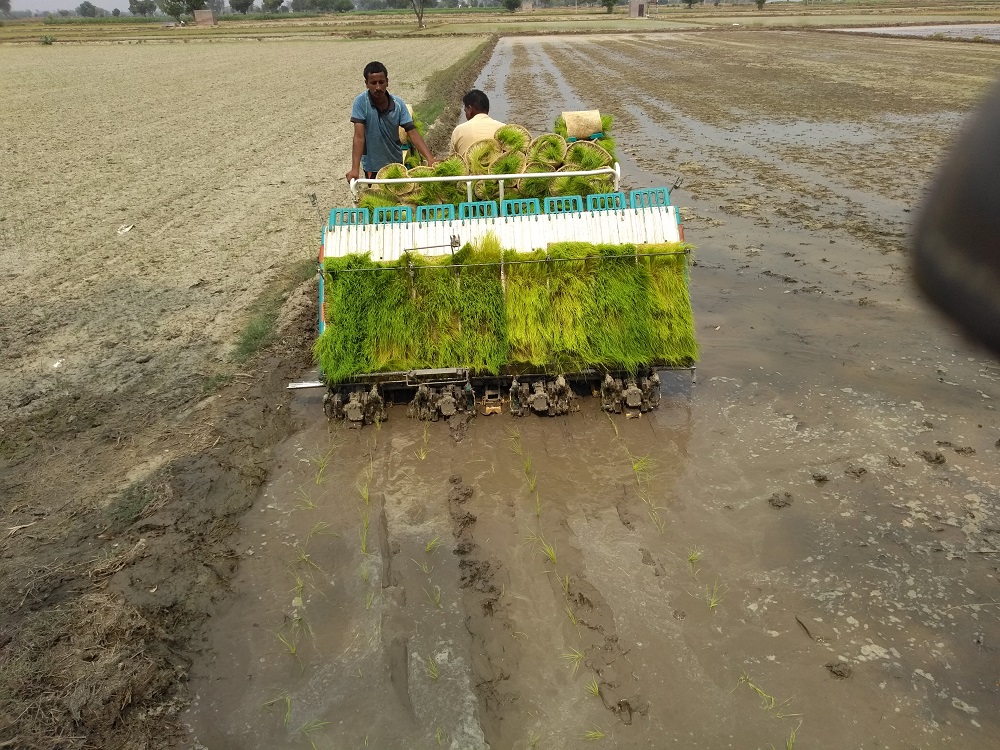
..
By promoting the wider use of hydroponics paddy nursery, the government can help Indian rice farmers save significant amounts of water, land, labor, time, and other resources. Organizing free training for farmers in different parts of the country will make them aware of the technology and its benefits which empowers them. It will also give them insights into developing new sources of income.
Ms. Saxena and Mr. Upadhyay are researchers at Ayurvet Research Foundation in Uttar Pradesh, India.






It will save cost and time of rice production greately I’m from Burden, wb want to learn and apply this new technology for my own and nearby farmers.
Please advice how can adopt it.
I am upcoming rice farmer in Nigeria
Great strides.excellent.
Trinidad& Tobago need this
technology
Thank you
This method is very important for peddy crops save water save human resources . this method able to large area high’ yeilding crops
Hydroponics is soilless why you are transferring them in Richfield?
I am interested in building up hydroponic nursery .. we plant 15 ekars of rice paddy every year. We want to use mechanized transplanted from this year. Can I afford and get financial help for hydroponic nursesy and paddy rice transplanted machine ? Can anybody guide ..how to get financial assistance ? I want to promote this technique and mechanized rice paddy transplanted…once it proves economically viable others who abodoned rice production though large holding can be repulled in the stream again.. but initially one has to step example with real ideals of economics of rice production..A pilot project I want to start in my area..Can I get support from local Agri dept and givt staff locally in this regard ? What efforts your wishing to do in this direction to reach at grassroots level ..I am eager to know from you little bit more. THANKS WITH REGARDS
BHARAT PATIL
AT &POST VANGAON, TALUKA . DAHANU DIST.. PALGHAR MAHA. STATE
Can I get any information about training sections for hydroponic rice …. Even about any institute…. I really want to learn practically which is useful to farmers…… I am very interested in hydroponics and also I am doing my masters in hydroponic rice….. I just want to learn more about it….. Help me to get any information even about internships also…
How can I get hydroponics rice seedlings machine to buy from your foundation. I really want to buy
Please contact Abha Saxena at abha.saxena(at)arfmail.in
I urgently want to know about hydroponic Rice technology, bcoz in our there are no rain from 2months.so plz help me how to do rice farming in hydroponic technique.
Mob-9937523405
Please contact Abha Saxena at abha.saxena(at)arfmail.in
Are organic nutrient solutions available to grow rice nursery hydroponically?
Thanks.
Regarding your question, please email the author at abha.saxena(at)arfmail.in
Steps to produce rice with very less water:
1. Soak and germinate the rice seeds in-house (brown rice can be used). Wait for 6-10 days until rice sprouts and become 4-5 inches tall.
2. Take vermicompost bed
3. Plant maximum possible rice plants on vermicompost
4- Sprinkle some water through a sprinkler so that plant roots get affixed into the soil.
5. Watch out for next 5-10 days. Not all plants will survive. Even if 5% survives the experiment is success. Let the plants grow that survived. The future rice seeds from these survived plants will more and more readily grow in low water.
At GFO, our main aim is and always will be quality over quantity. We have a team of experts who monitor and check the quality of every raw material and the organic fruit and vegetables that we grow here.
இந்த முறையை நான் பின்பற்ற எனக்கு உதவி தேவை
Please contact ABHA SAXENA at abha.saxena@arfmail.in for more information. Thank you.
Why rice seedling needs to be transplanted? Is it possible to make rice grow in a hydroponics system without fertilizer?
Please contact ABHA SAXENA at abha.saxena@arfmail.in for more information. Thank you.
Why do you need to transfer the hydrophobic seedlings in the paddies?
Is it not possible to grow them straight out without transferring?
My only concern as well if you transfer the seedlings to the paddies then it becomes conventional ang might have to follow the conventional caring of the plants like weeding, spraying pesticides and the like!
Also, watering as well!
Steps to produce rice with very less water:
1. Soak and germinate the rice seeds in-house (brown rice can be used). Wait for 6-10 days until rice sprouts and become 4-5 inches tall.
2. Take vermicompost bed
3. Plant maximum possible rice plants on vermicompost
4- Sprinkle some water through a sprinkler so that plant roots get affixed into the soil.
5. Watch out for next 5-10 days. Not all plants will survive. Even if 5% survives the experiment is success. Let the plants grow that survived. The future rice seeds from these survived plants will more and more readily grow in low water.
for research purposes, what is the annual crop yield of this type of farming?
Hydroponics rice is a project of Ayurvet Research Foundation. You may contact them through their website